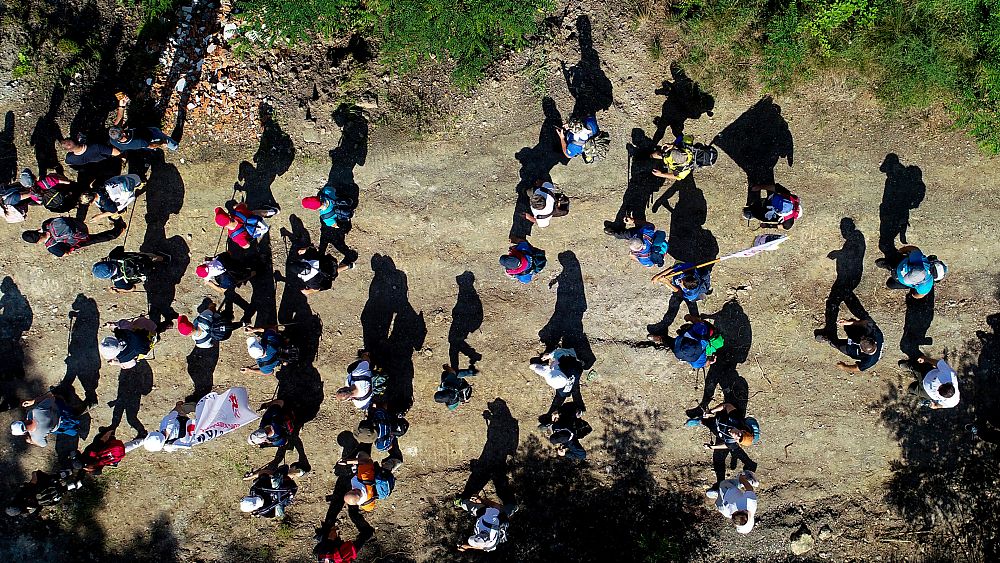
The faultlines of old conflicts in the former Yugoslavia are the most active they have been in years
The annual 100-kilometre march retraces a route taken by thousands of men and boys from the Bosniak ethnic group, made up primarily of Muslims, who were slaughtered as they tried to flee Srebrenica after it was captured by Bosnian Serb forces late in the 1992-95 war.
The march is part of several events preceding the actual date commemorating the massacre on July 11.
Nearly 4,000 people joined this year’s march, according to organisers. The event comes as ethnic tensions in Bosnia still persist with Bosnian Serbs continuing to push for more independence and their open calls for separation.
“I come here to remember my brother and my friends, war comrades, who perished here,” said Resid Dervisevic, who was among those who marched back in 1995. “I believe it is my obligation, our obligation to do this, to nurture and guard (our memories).”
Osman Salkic, another Srebrenica survivor, said “feelings are mixed when you come here, to this place, when you know how people were lying (dead) here in 1995 and what the situation is like today.”
The War in Bosnia erupted in 1992 after the former Yugoslavia broke up and Bosnian Serbs launched a rebellion and a land grab to form their own state and join Serbia. More than 100,000 people died before the war ended in 1995 in a US-brokered peace agreement.
In July 1995, more than 8,000 Bosniak males were separated by Serb troops from their wives, mothers and sisters, chased through woods around Srebrenica and killed. Bosnian Serb soldiers dumped the victims’ bodies in numerous mass graves scattered around the eastern town in an attempt to hide the evidence of the crime.
Before Russia invaded Ukraine, Bosnia’s carnage was considered the worst in Europe since WWII. There have been fears that the separatist policies of pro-Russian Bosnian Serb leader Milorad Dodik could fuel further instability as the war rages in Ukraine.
Dodik has denied that genocide took place in Srebrenica although two U.N. courts have ruled so and even as the remains of newly identified victims are continuously being unearthed from mass graves and reburied each year on July 11, the day the killing began in 1995.
A UN war crimes court in The Hague, Netherlands, has sentenced to life in prison both the wartime Bosnian Serb political leader Radovan Karadzic and the ex-military commander Ratko Mladic for orchestrating the genocide.
So far, the remains of more than 6,600 people have been found and buried at a vast and ever-expanding memorial cemetery outside Srebrenica. The remains of 30 more victims will be put to rest there on Tuesday.